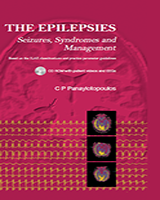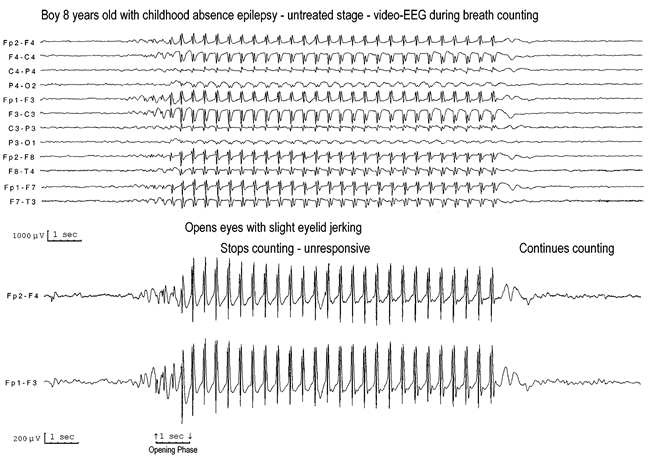From: Chapter 10, Idiopathic Generalised Epilepsies

NCBI Bookshelf. A service of the National Library of Medicine, National Institutes of Health.

He was referred for EEG because of “blanks and day dreaming”; the diagnosis had been overlooked despite frequent absences for 2 years, which also interfered with his scholastic performance.
The seizure had all the characteristic features of typical absences in CAE. Initially there was some brief eyelid flickering in the opening phase of the GWSD followed by opening of the eyes, eyes and head deviating upwards and to the right, and simultaneous cessation of breath counting. He remained unresponsive during the rest of the GSWD. Counting was restored immediately after the end of the GSWD.
Note the fast and asymmetrical onset of the GSWD in the opening phase during the first second. Subsequently, the GSWD is entirely rhythmical and regular with abrupt termination to clinical and EEG normality.24
From: Chapter 10, Idiopathic Generalised Epilepsies

NCBI Bookshelf. A service of the National Library of Medicine, National Institutes of Health.